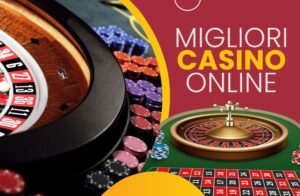
How to Make Education Fun: Turning Boredom into Curiosity
Introduction
Let’s face it — when most people think of education, words like “boring,” “stressful,” or “routine” often come to mind. But what if learning could be exciting, enjoyable, and even something students look forward to every day?
Education doesn’t have to be limited to textbooks and tests. In fact, when learning is fun, students become more curious, more involved, and more likely to remember what they learn. Whether you’re a teacher, parent, or student yourself, making education enjoyable is not only possible — it’s necessary for long-term success.
Let’s explore how to make education fun, meaningful, and engaging for learners of all ages.
1. Bring Learning to Life with Real-World Examples
One major reason students lose interest in school is because they don’t see how the knowledge applies to real life. Why should they care about algebra or historical dates? The solution is simple: connect lessons to the real world.
-
Teach math through shopping or budgeting games.
-
Make science exciting by showing how weather works or how plants grow in their garden.
-
Teach history by visiting museums or watching historical films.
When students see how what they’re learning is useful in real life, it sparks interest and curiosity.
2. Use Games and Quizzes
Games turn passive learning into active participation. Whether it’s a spelling bee, quiz competition, memory match, or even digital games, fun activities make lessons feel less like work and more like play.
Some popular methods:
-
Kahoot! or Quizizz for live quizzes.
-
Puzzle-solving games to boost critical thinking.
-
Classroom role-play or mock debates to bring subjects to life.
Games introduce friendly competition and excitement, which keeps students engaged.
3. Encourage Curiosity, Not Just Memorization
Many education systems focus too much on memorizing facts. This often kills the joy of learning. Instead, focus on asking questions and encouraging exploration.
-
Allow students to ask “why” and “how” more often.
-
Let them choose topics they want to research or present.
-
Introduce fun projects like building models, conducting experiments, or creating art based on what they learn.
When students are allowed to explore, they become active learners, not just passive listeners.
4. Mix It Up: Use Visuals, Audio, and Movement
Not all students learn the same way. Some prefer visuals, some love listening, and others need to move. So instead of sticking to the same teaching method, use variety to keep things fresh.
-
Use videos, animations, or infographics to explain topics.
-
Let students listen to educational songs, podcasts, or stories.
-
Include movement through educational games, field trips, or even classroom walks during discussions.
This not only makes education fun but also helps different types of learners absorb knowledge more effectively.
5. Create a Positive and Supportive Environment
A stressful or overly strict classroom can destroy the joy of learning. But when students feel safe, valued, and encouraged, they are more likely to enjoy their education.
Here’s how to build a positive learning atmosphere:
-
Celebrate mistakes as part of the learning process.
-
Give students praise and positive feedback.
-
Avoid punishments and replace them with constructive guidance.
-
Build friendly teacher-student relationships.
When students feel emotionally secure, they are more open to learning and trying new things.
6. Use Storytelling as a Teaching Tool
Everyone loves a good story. Storytelling is one of the oldest and most powerful ways to teach because it captures attention and stirs the imagination.
-
Turn historical events into narratives with characters and drama.
-
Use stories in science to explain discoveries and inventors’ journeys.
-
Introduce moral values and lessons through folk tales and fables.
Stories help students relate to the subject and remember it long after class is over.
7. Allow Student Choice and Voice
Students feel more motivated when they have some control over their learning. Giving them choices creates a sense of ownership.
-
Let students pick books to read, topics for projects, or roles in a group activity.
-
Ask for their feedback on what they enjoy or want to learn.
-
Allow creative freedom in assignments (like writing a poem, making a video, or designing a poster).
This makes learning personal and meaningful, instead of just another task to complete.
8. Bring in Technology and Innovation
In today’s digital world, children are naturally drawn to screens. Rather than fighting this, use it to your advantage.
-
Introduce learning apps and educational games.
-
Use augmented reality (AR) or virtual reality (VR) to take virtual tours of planets, forests, or the human body.
-
Encourage students to make presentations or short educational videos.
These tools turn lessons into interactive experiences, making learning far more engaging.
9. Include Creative Arts and Play
Don’t separate learning from creativity. Include drawing, music, acting, or building into lessons.
For example:
-
Let students draw what they learned in science class.
-
Use music to teach math patterns.
-
Act out plays from literature or history.
Creativity brings energy and joy into education. It also helps students express what they’ve learned in their own unique way.
Conclusion
Education doesn’t have to be dull or stressful. When we make learning fun, we help students become curious, motivated, and excited about discovering new things. The goal should not just be to fill minds with information but to ignite a lifelong love for learning.
Whether you’re a teacher looking to energize your classroom or a parent helping your child study at home, small changes can make a big difference. Add games, stories, projects, and encouragement — and watch education transform from a burden into a beautiful journey.






